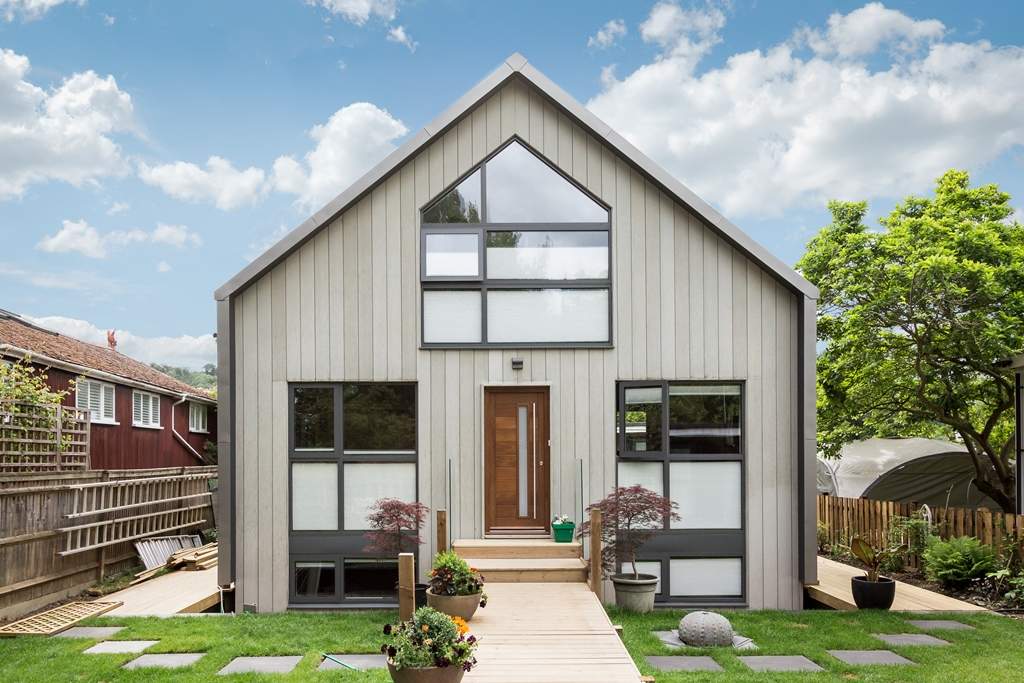
From floating houses to waste-incinerating power plants, green architecture and design is tackling the consequences of climate change.
Modern architects are tasked with designing buildings that are not only aesthetically pleasing but also sustainable. As such, they must have a low-carbon footprint and exist in harmony with their natural surroundings.
However, some innovative architects are pushing the boundaries of eco-friendly design even further in an effort to combat climate change.
1) The Amphibious House, Buckinghamshire, UK
Baca Architects designed the UK’s “first amphibious house” to protect inhabitants should the River Thames bursts its banks.

Climate change increases the risk of widespread flooding. However, the dock-like foundations mean the structure, known as Formosa, in Marlow, Buckinghamshire, can float and survive up to 2.5m of floodwater.
Moreover, the small sloping garden provides an early warning of flooding.
2) Amager Bakke Waste-to-Energy Plant, Copenhagen, Denmark
Marketed as the “cleanest power plant in the world”, Amager Bakke will burn waste to generate energy.
In addition, the stunning building designed by Bjarke Ingels Group (BIG) will feature a ski slope on the roof. Furthermore, a mechanism will release 25m-wide steam rings from the plant’s 124m-high chimney to mark every ton of CO2 burned!
3) The Climate Tile, Denmark
Innovative building materials as well as buildings themselves are being developed by green architects. As a result, one such innovation could help divert increased rainfall caused by climate change away from populated urban areas.
The brainchild of Danish design studio Tredje Natur, the modular Climate Tiles form a paving system dotted with holes, tunnels and ridges that funnel rainwater away from sidewalks to nearby planting areas to provide irrigation.
In addition, water that passes into the tiles is directed towards a managing unit that stores it prior to treatment.

4) The Soul of Nørr, Copenhagen, Denmark
Landscape studio SLA and engineering company Ramboll are collaborating to tackle the issue of extreme weather, specifically flooding.
As such, the partners are developing the £16 million Soul of Nørr project in the Danish capital of Copenhagen. Using sunken basins and water-purifying planting, the team hopes to protect communities from heavy hail or rain that cause flooding.
5) CALTROPe, Hungary
How best to protect precious agricultural land from the rising sea levels and the increased threat of flooding? Hungarian design collective Szövetség’39 (with help from scientists) thinks it may have an answer.
CALTROPe is a modular structure that helps mangrove forests to grow and form natural dams in the world’s delta regions.
Mangrove plants are salt-tolerant. As a result, they act as a natural breakwater against tides, trapping river sediment in their roots and protecting ecosystems.
In addition, the structures simply crumble away in around 15 to 20 years.
“The modules serve as containers and incubators for the young mangrove saplings that, getting stronger with time, will become self-supporting and form a natural dam,” the Szövetség’39 team told De Zeen.
Read about the latest environmentally friendly architecture trends in LEAF Review. In addition, track the latest developments in the built environment.
If you enjoyed this article, then read more here:
https://live-newstatesman-b2b.pantheonsite.io/climate-change/
“Architects have a social role to play in society” – ABB LEAF Awards judge Firas Hnoosh


